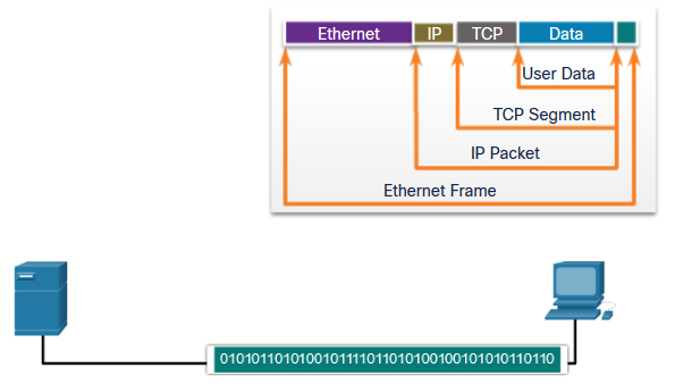
About Lesson
Protocol Suites
Explain the purpose of adhering to a protocol suite.
Network Protocol Suites
Protocols must be able to work with other protocols. Protocol suite:
- A group of inter-related protocols necessary to perform a communication function
- Sets of rules that work together to help solve a problem
 The protocols are viewed in terms of layers:
The protocols are viewed in terms of layers:
- Higher Layers
- Lower Layers- concerned with moving data and provide services to upper layers
Evolution of Protocol Suites
There are several protocol suites.
- Internet Protocol Suite or TCP/IP- The most common protocol suite and maintained by the Internet Engineering Task Force (IETF)
- Open Systems Interconnection (OSI) protocols- Developed by the International Organization for Standardization (ISO) and the International Telecommunications Union (ITU)
- AppleTalk- Proprietary suite release by Apple Inc.
- Novell NetWare- Proprietary suite developed by Novell Inc.

TCP/IP Protocol Example
- TCP/IP protocols operate at the application, transport, and internet layers.
- The most common network access layer LAN protocols are Ethernet and WLAN (wireless LAN).

TCP/IP Protocol Suite
TCP/IP is the protocol suite used by the internet and includes many protocols. TCP/IP is:
- An open standard protocol suite that is freely available to the public and can be used by any vendor
- A standards-based protocol suite that is endorsed by the networking industry and approved by a standards organization to ensure interoperability

TCP/IP Communication Process
A web server encapsulating and sending a web page to a client.  A client de-encapsulating the web page for the web browser
A client de-encapsulating the web page for the web browser 
Other related topics
| Topic Title | Topic Objective |
|---|---|
| The Rules in Network Communications | Describe the types of rules that are necessary to successfully communicate. |
| Protocols | Explain why protocols are necessary in network communication. |
| Protocol Suites | Explain the purpose of adhering to a protocol suite. |
| Standards Organizations | Explain the role of standards organizations in establishing protocols for network interoperability. |
| Reference Models | Explain how the TCP/IP model and the OSI model are used to facilitate standardization in the communication process. |
| Data Encapsulation | Explain how data encapsulation allows data to be transported across the network. |
| Data Access | Explain how local hosts access local resources on a network. |
Other useful information
- Full CCNA Course
- CCNA Certificate Information
- 200-301 CCNA Exam Questions and Solutions
- 200-301 CCNA Exam Topics
Join the conversation